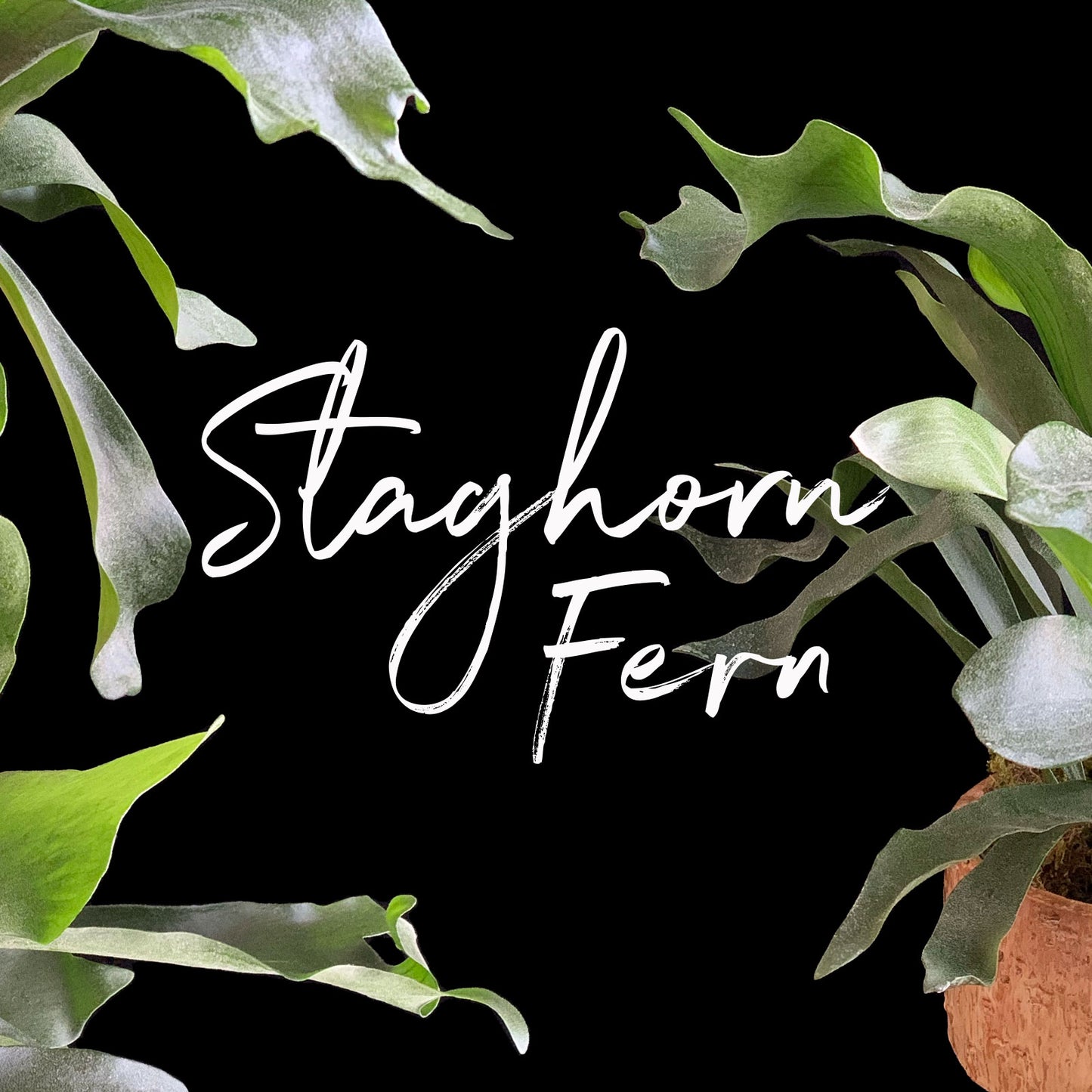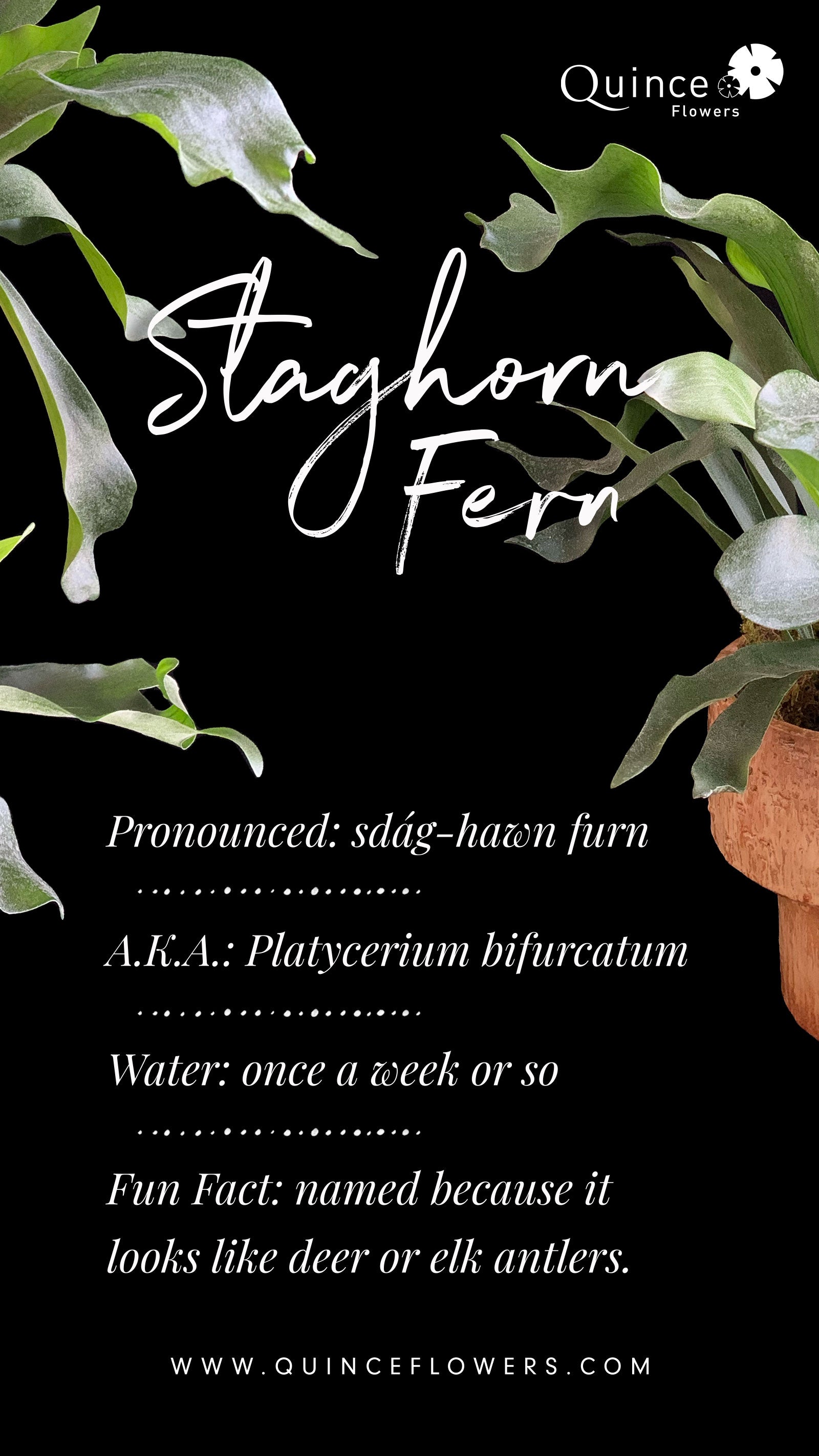
Staghorn ferns are a unique and beautiful addition to any plant collection. Native to tropical rain forests of East Asia, they're a great choice to bring a jungle vibe into your home.
The plant gets its name from the large, antler-shaped fronds or leaves which grow from the base of this fern. Its fronds are divided into two parts: a large, flat “shield” or “shield frond” at the top, and a smaller, curled “horn” or “horn frond” at the bottom. The fronds are very flat and wide, giving the plant a unique, antler-like appearance. The fine fuzz on these leaves add to the illusion.
When it comes to care, staghorn ferns are relatively low maintenance. They prefer bright, indirect sunlight but can tolerate low light as well. Water them regularly, but not too frequently, as they can easily become waterlogged. Be sure to drain any excess water, as standing water can cause root rot. Staghorn ferns prefer humid environments, so mist them regularly with a spray bottle.
For the adventurous, the staghorn is a perfect choice for creating a kokedama. What's that, you ask? Kokedama, which translates to "moss ball," is an art form originating in Japan. It involves wrapping the roots of a plant in a ball of soil and moss and suspending it with string. We can make one for you, or assemble the supplies – a staghorn fern, potting soil, sheet moss, and a string – so you can make your own!
The plant gets its name from the large, antler-shaped fronds or leaves which grow from the base of this fern. Its fronds are divided into two parts: a large, flat “shield” or “shield frond” at the top, and a smaller, curled “horn” or “horn frond” at the bottom. The fronds are very flat and wide, giving the plant a unique, antler-like appearance. The fine fuzz on these leaves add to the illusion.
When it comes to care, staghorn ferns are relatively low maintenance. They prefer bright, indirect sunlight but can tolerate low light as well. Water them regularly, but not too frequently, as they can easily become waterlogged. Be sure to drain any excess water, as standing water can cause root rot. Staghorn ferns prefer humid environments, so mist them regularly with a spray bottle.
For the adventurous, the staghorn is a perfect choice for creating a kokedama. What's that, you ask? Kokedama, which translates to "moss ball," is an art form originating in Japan. It involves wrapping the roots of a plant in a ball of soil and moss and suspending it with string. We can make one for you, or assemble the supplies – a staghorn fern, potting soil, sheet moss, and a string – so you can make your own!
• Rosie, owner Quince Flowers


